Why Scott County Mississippi Land Attracts Buyers
Scott County sits along the I-20 corridor in central Mississippi, giving it a rare combination of rural economy and easy access. Land here is productive, not speculative. Buyers come looking for timber tracts that have been worked for decades, poultry farms still under integrator contracts, and hunting land with mature pines and deep hollows that hold deer. This isn’t a county full of resorts or subdivisions. It’s pine country, with log trucks on the move and chicken houses still expanding near Morton and Forest.
Forestry is the backbone here. Most land that isn’t in chickens is in pines—loblolly for pulp and sawtimber. Small landowners still manage their timber in 20- to 40-acre blocks, often passed down within families. Buyers like that because it’s working land that hasn’t been stripped or neglected. Poultry operations are also steady, with active integrators and a workforce that knows the business. And when it comes to hunting, Scott County’s topography and cover are better than many counties in the region. You’ll find food plots already in place, trails cut through the woods, and good populations of deer and turkey.
What makes Scott County appealing is its utility. The land pays for itself. You can run timber cycles, lease hunting rights, or build poultry income. It’s not overpriced, and it’s not flashy. Just honest Mississippi land that still does a job.
Natural Features That Stand Out
Scott County land sits in a transitional zone of rolling uplands and stream bottoms, with a mix of loblolly pine stands and scattered hardwoods. The terrain offers real variation—ridgetops for house sites or chicken houses, and creek draws for hunting. The Bienville National Forest cuts across the county’s heart, protecting habitat and keeping the rural landscape intact. With no major urban sprawl, natural features here still shape how the land is used and valued.
Bienville National Forest
This federally managed forest spans thousands of acres across the county, offering timberland buffers, hunting access, and a stable backdrop for nearby private land values. It preserves hardwood bottoms and pine ridges.
Pine Uplands
Most of the county’s rural land is in pine production, especially loblolly. These uplands are ideal for managed timber cycles and poultry operations, with decent soils and established access roads.
Creek Systems and Hollows
Small creeks run through the county, feeding lowland hollows with hardwood cover. These features create wildlife corridors and give landowners natural diversity for hunting or livestock shade.
Timber, Poultry, and Rural Farming Investment Land
Scott County offers real-world land uses that pay. Timber has long been the leading investment, with active markets and plenty of infrastructure to support pulp and sawtimber harvesting. Poultry farming is also well-established, with integrator-supported farms found throughout the county. Row crops are less common, but pasture and mixed-use rural farms still play a role, especially in southern and eastern parts of the county where terrain levels out.
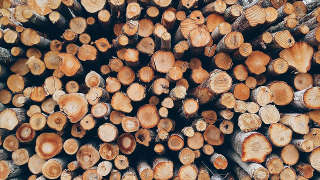
Timber Land
Pine timber dominates Scott County, with most landowners managing loblolly stands for pulpwood, chip-n-saw, or sawtimber rotations. Access roads and local mills make harvest and replanting cost-effective. Timberland here is often legacy-owned and well maintained, offering buyers a chance to step into established management cycles. Investment return is steady and long-term.
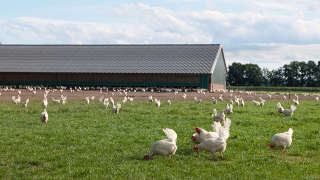
Poultry Farms
Scott County is one of central Mississippi’s poultry hubs. Broiler and breeder farms are common, and integrators remain active in supporting growers. Properties with houses under contract tend to move fast. Many operations are family-run and ready for upgrades, giving buyers a foothold in a dependable ag sector with financing potential and a strong labor pool.
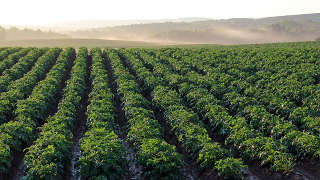
Pasture and Rural Farming
While timber and poultry lead the way, pastureland and mixed-use rural farms still play a role in Scott County’s ag economy. Small cattle operations and hay production are common in areas like Lake and Sebastopol. These properties often feature fenced fields, barns, and water access, making them usable from day one for hobby or small-scale ag buyers.
Hunting Land and Fishing Ponds for Sale
Scott County has long been a stronghold for whitetail and turkey, thanks to its pine ridges, hardwood draws, and food plot-ready terrain. Many rural tracts already have internal trails and clearings cut for hunting. Bienville National Forest adds public acreage for both still hunters and turkey chasers. Small ponds and streams across the county offer fair fishing, especially for bass and catfish on private land.
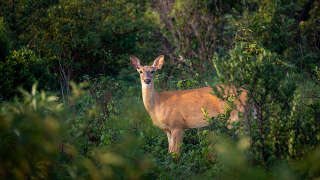
Whitetail Deer
Scott County holds a solid deer population, especially in timber tracts with food plots. Mature bucks are common near the Bienville forest edge and in bottomland cover.
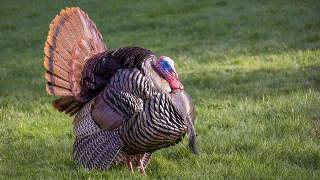
Eastern Wild Turkey
Turkeys thrive in mixed pine and hardwood habitat, with good spring gobbling in quiet tracts. Forest edges and creek draws are key zones for longbeards.
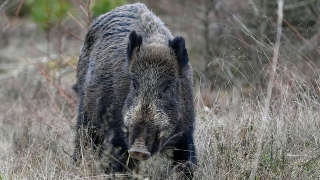
Feral Hogs
Wild hogs are increasingly seen across Scott County, especially in lowland areas near creeks. Some landowners actively trap or hunt them year-round.
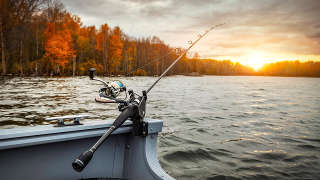
Fishing
Stocked ponds and rural lakes offer bass, bream, and catfish. Though small, these waters are dependable for private landowners and weekend anglers.
Land Offers Access Without Crowds
What sets Scott County apart is its blend of access and space. With I-20 slicing through the county and Jackson under an hour away, it’s easy to live rural and still commute or resupply when needed. But unlike other central Mississippi counties, Scott hasn’t been overrun with development. This keeps land prices in check and preserves real rural character. You can still find 40- to 100-acre tracts that back up to national forest, or poultry farms that haven’t changed hands in decades.
Land for Sale in Nearby Central Mississippi Counties
Scott County borders several other strong rural markets, especially for timber, poultry, and recreational tracts. These neighboring counties share similar terrain and land use, giving buyers more options without leaving the region.
Leake County
Leake offers pine tracts and hunting land with similar terrain, plus proximity to Carthage for supplies and livestock markets.
Smith County
Smith County shares Scott’s timber economy and rural layout, with fewer poultry farms but more mixed forest tracts.
Rankin County
To the west, Rankin brings higher land prices and more development pressure but still holds value in rural pockets near Pelahatchie.